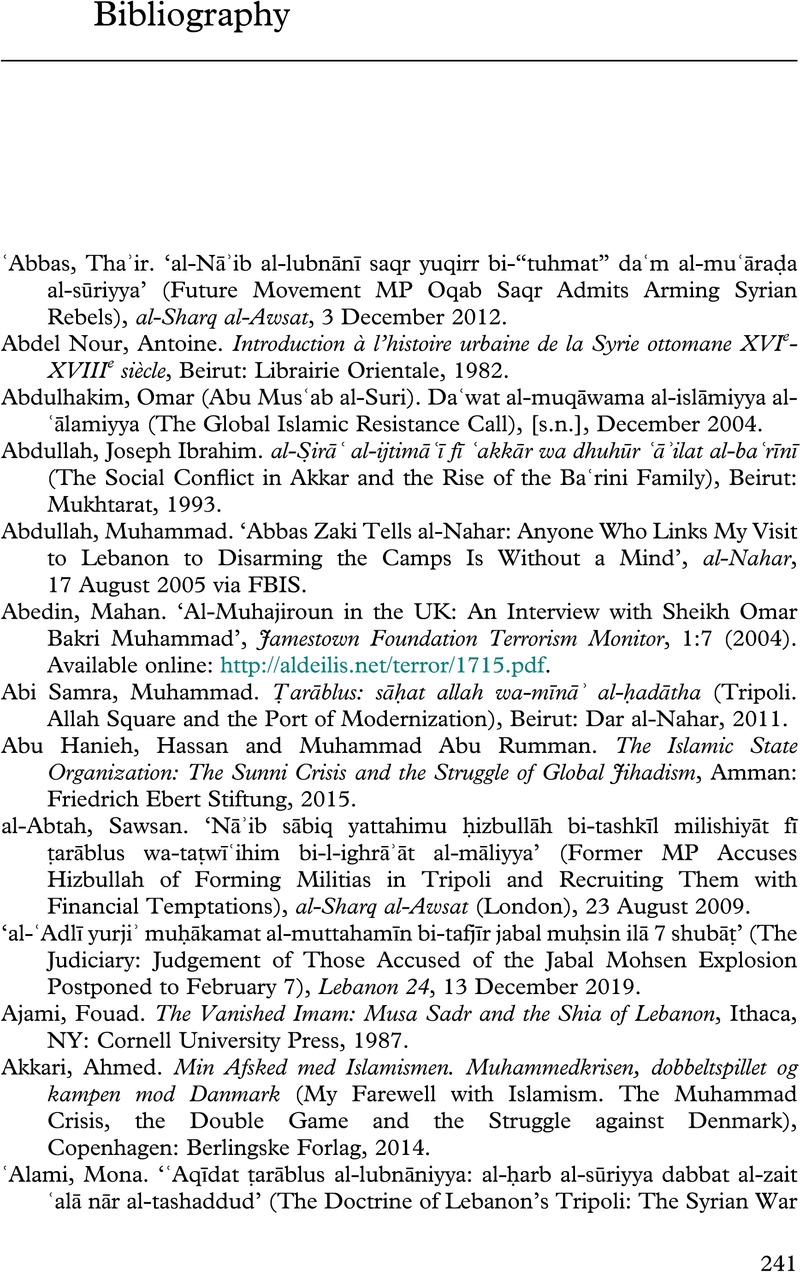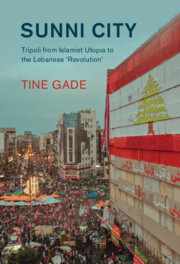Book contents
- Sunni City
- Cambridge Middle East Studies
- Sunni City
- Copyright page
- Contents
- Figures
- Acknowledgements
- Who Is Who in Tripoli?
- Timeline of Major Events
- Note on Arabic Transliteration
- Introduction
- 1 Tripoli’s City Corporatism and Identity Politics during the Nationalist Era (1920–1979)
- 2 Regional Proxy War
- 3 The Postwar Erosion of Tripoli’s City Corporatism
- 4 The Globalization of Islam and the Crisis of Religious Authority
- 5 The Future Movement
- 6 Tripoli’s Islamists
- 7 The Impact of the Syrian Civil War and Beyond (2011–2020)
- Conclusion
- Bibliography
- Index
- Books in the Series
- References
Bibliography
Published online by Cambridge University Press: 10 November 2022
- Sunni City
- Cambridge Middle East Studies
- Sunni City
- Copyright page
- Contents
- Figures
- Acknowledgements
- Who Is Who in Tripoli?
- Timeline of Major Events
- Note on Arabic Transliteration
- Introduction
- 1 Tripoli’s City Corporatism and Identity Politics during the Nationalist Era (1920–1979)
- 2 Regional Proxy War
- 3 The Postwar Erosion of Tripoli’s City Corporatism
- 4 The Globalization of Islam and the Crisis of Religious Authority
- 5 The Future Movement
- 6 Tripoli’s Islamists
- 7 The Impact of the Syrian Civil War and Beyond (2011–2020)
- Conclusion
- Bibliography
- Index
- Books in the Series
- References
Summary

- Type
- Chapter
- Information
- Sunni CityTripoli from Islamist Utopia to the Lebanese ‘Revolution', pp. 241 - 270Publisher: Cambridge University PressPrint publication year: 2022



